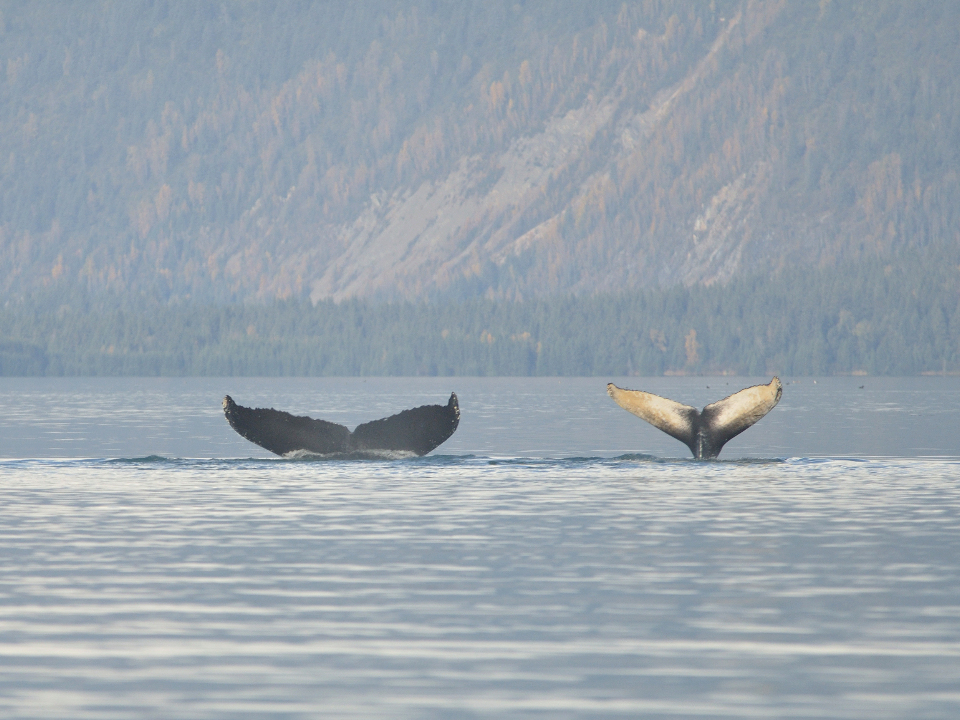
The current study was based on the analysis of DNA found in whale skin. Whales and dolphins continually shed flakes of skin in the ocean, especially when they exhibit splashy behaviors like breaches, flipper slaps or tail slaps. Sophie Pierszalowski is shown here with a sloughed skin sample collected after whale #118 breached in Glacier Bay in 2013. If you look closely, you'll see a cyamid (whale louse) on the skin sample.

This 2009 photo shows a mother (#1079) and her calf (#2161). Humpback whale observation, photography and sample collection are conducted under the authority of scientific research permits issued by the National Marine Fisheries Service.
The study, led by graduate student Sophie Pierszalowski, compared the DNA profiles and sighting histories of 74 “founder” whales known to have been in the Glacier Bay area in 1973-1985 and an additional 118 DNA profiles from biopsy samples of “contemporary” whales from the SPLASH study conducted throughout Southeast Alaska in 2004-2005. The findings show that at least 74% of the contemporary whales in the Glacier Bay area are either founders themselves or descendants of the founder whales.
In other words, the increasing number of whales in the Glacier Bay area in the 1990s thru 2000s is best explained by the faithful return of whales whose mother first brought them to the area as a calf. Some of these returnees include females who later continued the tradition with their own young. Verifying that culturally inherited migratory habits are such an important determinant of long term population structure reinforces the value of local habitat protection for humpback whales.
To read the full scientific paper, use this link to the Endangered Species Research journal: http://www.int-res.com/abstracts/esr/v31/p177-189/
A press release about the new publication from Oregon State University can be found at http://oregonstate.edu/ua/ncs/archives/2016/oct/study-finds-local-fidelity-key-ocean-wide-recovery-humpback-whales
Pierszalowski, S. P., Gabriele, C. M., Steel, D. J., Neilson, J. L., Vanselow, P. B., Cedarleaf, J. A., Straley, J. M., and Baker, C. S. (2016). Local recruitment of humpback whales in Glacier Bay and Icy Strait, Alaska, over 30 years. Endangered Species Research, 31, 177-189. doi:10.3354/esr00761
You’ll see a familiar mountain range in the whale photograph from Glacier Bay on the Facebook page for Endangered Species Research https://www.facebook.com/EndangeredSpeciesResearch
